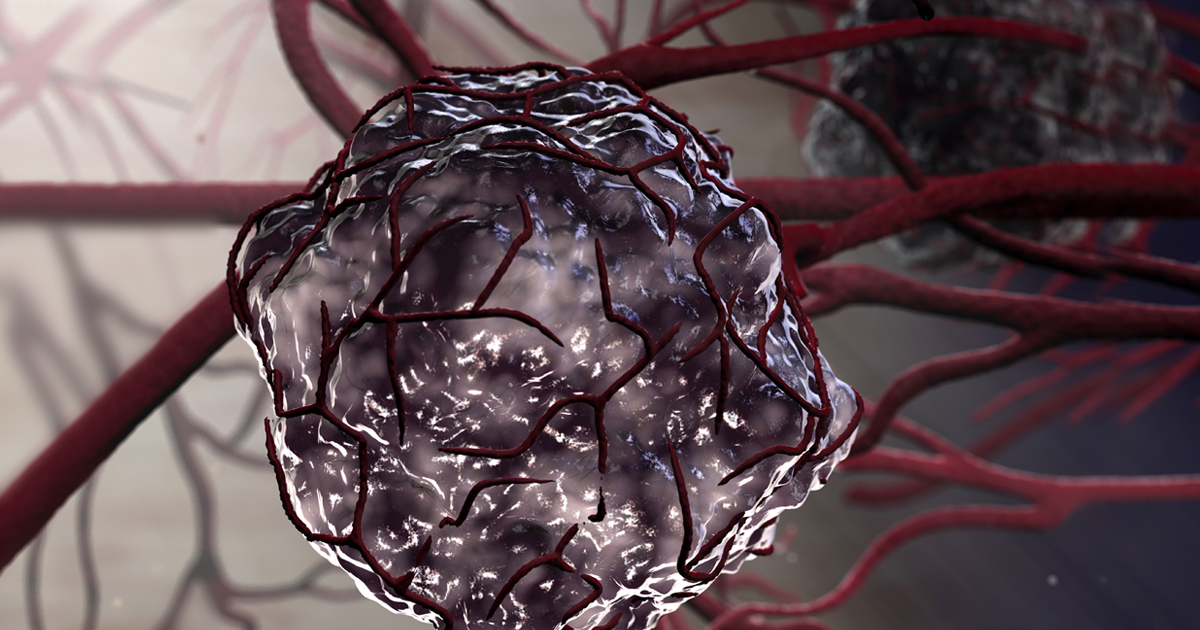Causes Of Horner Syndrome
Horner syndrome occurs as a result of damage to the sympathetic pathways. It happens in rare cases and may affect anyone as young as one year old. The condition is characterized by several effects with the facial area. Miosis is the pupil becoming smaller in size. Another symptom, ptosis, is defined as droopy upper eyelids. With that, inverse ptosis (elevation) of the lower eyelid can also occur. Patients can also experience anhidrosis, a lack of sweating, in the area of the affected pupil. As to what causes Horner syndrome, a number of triggers have been suggested based on observations.
Neck Trauma

Neck trauma is one of the most commonly linked factors to Horner syndrome. Injuries affecting the neck area interfere with the transmission of the first, second, or third order neurons within the sympathetic pathways. Neurons are nerve cells responsible for the exchange of chemical and electrical signals between the brain as well as other parts of the body.
An assessment from 2004 documents a five-year-old who presented with Horner syndrome following an episode of blunt trauma to the neck. In a 2007 case report, it is revealed a twenty-two-year-old male patient developed the condition following a motorcycle crash in which he suffered trauma to the neck and chest. An additional case report from 2007 reveals a thirty-three-year-old male patient demonstrated Horner syndrome symptoms such as miosis and ptosis after experiencing neck trauma. In another case report from 2011, a twenty-five-year-old male patient presented with the condition after being stabbed in the neck.
Syringomyelia

Horner syndrome is a complication of syringomyelia, which is where the spinal cord is affected by a fluid-infused cavity called a syrinx. A syrinx may be caused by trauma or other spine-related conditions, such as meningitis and arachnoiditis. As the syrinx grows in size, it can damage the spinal cord, thus causing devastation to the neurons. In a 2002 case report, it is revealed Horner syndrome symptoms in a seventy-six-year-old female patient may have been due to an expanding syrinx.
Another case report suggests an extending syrinx in the C5-C7 region was the cause of Horner syndrome in a sixteen-year-old male patient. In another case report from 2010, an infant presented with anisocoria, ptosis, and weakened upper limb muscles along with a growing syrinx in the CT-T2 region. In addition, imaging showed damage to the brachial plexus, a series of nerves affecting areas between the neck and hands. It was concluded the abnormalities were due to the development of the syrinx.
Schwannoma

Another cause of Horner syndrome is schwannoma, which occurs when the cells, called the Schwann cells, develop a tumor. These cells are what make up the nerve sheath. The sheath is made of a fatty substance called myelin, forming a protective mantle around the nerves. A direct cause has yet to found; however, neurofibromas are suggested to play a role in the development of the tumors. Schwannomas can cause damage to nerves as well as the spinal cord. However, several reports back up the theory of these tumors as probable causes for Horner syndrome.
In a 2003 case report, a forty-eight-year-old female patient presented a dumbbell-shaped tumor accompanied by ptosis, anisocoria, and anhidrosis. Following removal of the tumor, symptoms improved. A separate case report from 2009 revealed a sixty-year-old female Horner syndrome patient presented a nerve sheath tumor in the lump on her neck. Symptoms included ptosis in the left upper eyelid.
Lung Cancer

Lung cancer is also linked to Horner syndrome, and in this case, it is called Pancoast syndrome, which is very rare compared to other types of lung cancer. In this condition, cancer develops in the top portion of the lungs and may spread to the brachial plexus. Thus, it can damage the nerves and cause compression to the spinal cord.
The link between Horner syndrome and Pancoast syndrome has been shown in several reports. In a 2016 case report, a fifty-six-year-old male patient showed a spindle cell sarcoma in the top portion of the right lung. With that, he presented miosis and ptosis in the right eye. Another case report, one from 2014, showed a tumor in the upper portion of the right lung in a fifty-nine-year-old male patient, who also presented with ptosis and anhydrosis on the right side. Another piece of research followed a thoracic myxofibrosarcoma male patient who had ptosis and miosis in the left eye. The patient's condition was classified as Pancoast syndrome.
Migraines And Cluster Headaches

Migraines and cluster headaches are also known to cause Horner syndrome. Some research suggests headaches could involve effects on the sympathetic pathways. Available information comes from several case reports. In a 2001 assessment, cluster headaches were assumed to be the cause of permanent Horner's syndrome in seven patients. Based on additional information, however, the patients may have suffered lesions to the sympathetic pathways.
A 2005 case report revealed a Horner syndrome male patient suffered from severe headaches prior to developing ptosis, thus leading to anisocoria. Headaches are also presented with Horner syndrome in a newer case report from 2016. The sixty-one-year-old male patient suffered ptosis and miosis in the left eye.
Encephalitis

Encephalitis refers to inflammation that occurs in the brain. The condition can lead to the eye symptoms seen in patients with Horner syndrome. While encephalitis sometimes produces only mild flu-like symptoms, patients may sometimes develop sensory loss or paralysis in certain areas of the face, and muscle weakness, confusion, and seizures might occur. Some patients could experience problems with speech or hearing, and babies may have bulging along the soft spots of their skull. Several viruses, including herpes, enteroviruses, rabies, and viruses spread by ticks and mosquitoes, may all lead to the development of encephalitis.
Emergency medical care should be obtained if the patient develops a fever, confusion, or a reduced level of consciousness. To diagnose this illness, doctors typically order MRI or CT scans to detect swelling in the brain, and a lumbar puncture can help in identifying the underlying cause. Encephalitis patients might need to have an electroencephalogram to study their brain activity, and blood and urine tests could be necessary. To treat this ailment, patients may be given antiviral drugs such as acyclovir, and breathing assistance, intravenous fluids, and other supportive care measures are provided depending on the patient's symptoms.
Multiple Sclerosis

Multiple sclerosis is a chronic condition in which the body's immune system damages the coverings that protect nerves. Patients with this illness could develop vision problems, including blurry vision and double vision. They may also have pain during eye movement, and some individuals could have partial or complete vision loss; this typically affects one eye. Multiple sclerosis often makes movement painful, and patients tend to have tingling or electric-shock sensations while bending the neck forward, and they may develop muscle weakness on one side of the body. Tremors and an unsteady gait might be present. To diagnose this disorder, patients will need to have a neurological exam and blood tests, and a lumbar puncture and MRI scan may be required. Some will also be asked to have evoked potential tests.
Corticosteroids can help reduce inflammation of the nerves, and clinicians might recommend plasmapheresis for patients with severe symptoms that have not responded to corticosteroids. To slow down the progression of the primary-progressive form of multiple sclerosis, a medication called ocrelizumab may be beneficial. For patients with the relapsing-remitting form, oral medications such as fingolimod and dimethyl fumarate are often recommended, and injections of glatiramer acetate or beta interferons may be prescribed.
Cavernous Sinus Thrombosis

First described in 1831, cavernous sinus thrombosis is a life-threatening condition that most often develops in conjunction with sepsis. This type of thrombosis occurs when a blood clot forms in one of the deep veins at the base of the skull. Patients with this condition may have a high fever, headache, visual disturbances, and rapid swelling of the periorbital area. Patients may notice pain or numbness in the face, and eye movements could be impaired. At times, the eyelids can swell, and the pupils may appear uneven or excessively dilated.
Cavernous sinus thrombosis typically occurs as a late-stage complication after an infection of the central areas of the face or the paranasal sinuses. Less commonly, it could develop following trauma, bacteremia, ear infections, or maxillary teeth infections. To diagnose this condition, doctors rely on CT and MRI scans, and treatment consists of high doses of intravenous antibiotics and anticoagulants. Cavernous sinus thrombosis has a very high fatality rate, and patients who survive may have long-term health problems, including permanent double vision. The illness could lead to strokes or brain abscesses, and blindness, and some survivors might develop an underactive pituitary gland.
Thoracic Aortic Aneurysm

A thoracic aortic aneurysm occurs when an area in the upper part of the aorta, located in the chest, is weakened and balloons in size. Patients with this condition may not experience any symptoms if the aneurysm is small. Larger aneurysms could produce symptoms such as back pain, coughing, hoarseness, chest pain, and shortness of breath. Thoracic aortic aneurysms are often discovered during routine imaging studies conducted for another reason. For example, they may be detected if the patient has a chest x-ray, echocardiogram, CT scan, or MRI scan.
To treat small aneurysms, doctors may choose to regularly monitor their growth with frequent scans. Surgery might be suggested for aneurysms larger than 1.9 inches. Sometimes, an aneurysm could rupture, leading to potentially life-threatening complications. Possible signs of a ruptured aneurysm could include swallowing difficulties, sudden and intense chest or back pain, low blood pressure, breathing difficulties, and weakness along one side of the body. Emergency medical care should be sought for patients with these symptoms, and emergency surgery may be required.
Thyroid Carcinoma

A thyroid carcinoma is a tumor that forms on the thyroid gland. Patients with a thyroid carcinoma could experience hoarseness in the voice, and they might also notice a lump at the front of the neck. Swallowing difficulties, pain in the neck and throat, and swollen lymph nodes in the neck may be observed. To diagnose this condition, clinicians will palpate the thyroid to check for enlargement or other physical changes. Patients will have blood tests to look for any abnormalities in thyroid function, and a thyroid tissue sample may be biopsied.
Ultrasounds, CT scans, and PET scans could be ordered to help the healthcare team determine if the carcinoma has spread to areas outside the thyroid. The majority of patients with thyroid carcinoma will have an operation to remove all or part of their thyroid gland. Lymph nodes in the neck might need to be removed as well, and some patients may need radiation or chemotherapy.
